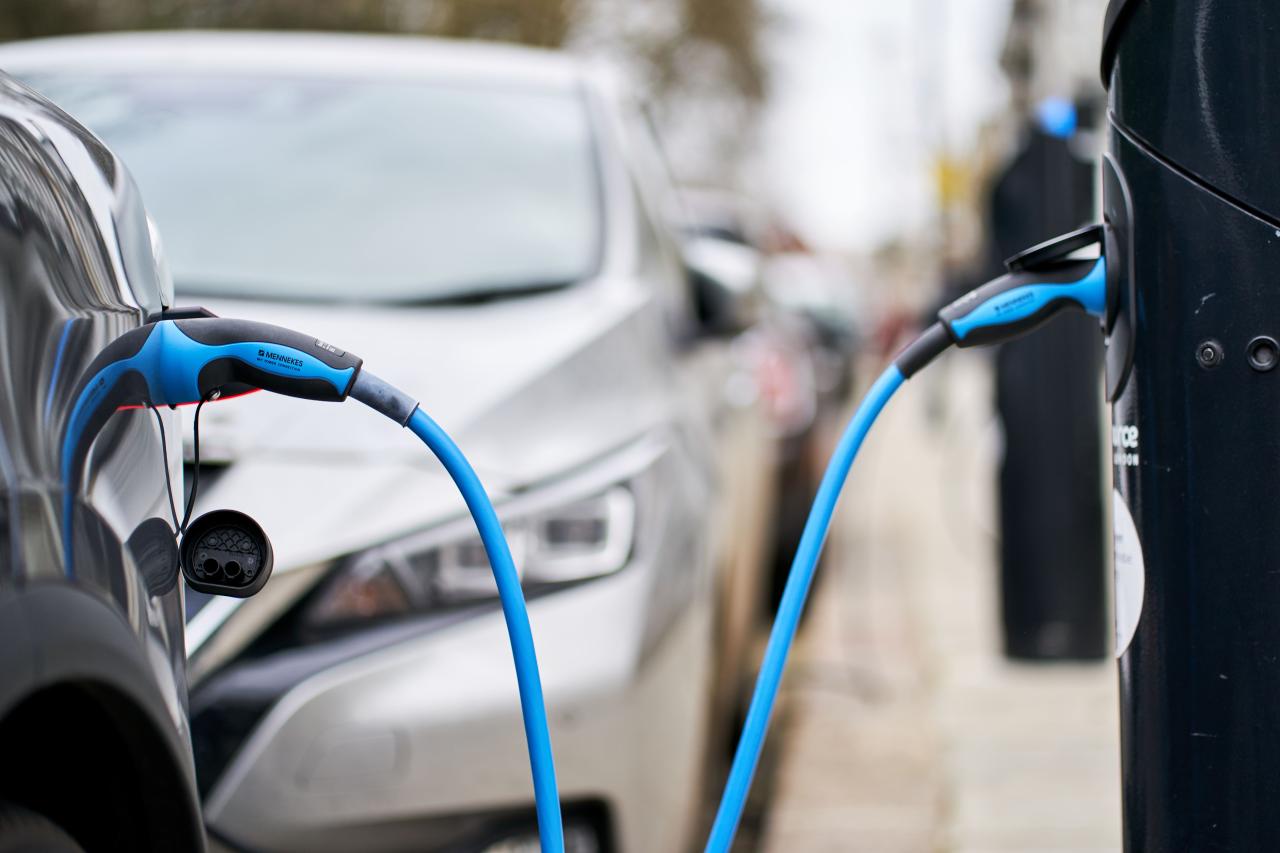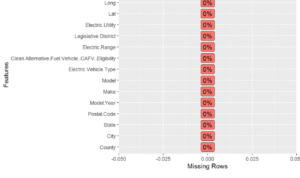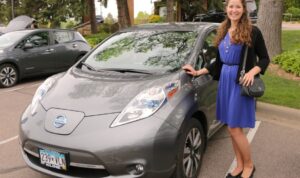How Weather Affects Used Electric Car Performance is a crucial topic for electric vehicle owners and enthusiasts alike. As we navigate through different climates, understanding how varying weather conditions can impact battery efficiency, driving range, and charging capabilities becomes essential. From the chilling effects of winter’s cold to the sweltering heat of summer, weather plays a significant role in the overall performance of electric cars, making it vital to adapt our driving habits and maintenance practices accordingly.
This exploration delves into how temperature influences battery capabilities, the effects of rain and snow on charging, and the strategies electric car owners can employ to optimize their vehicles’ performance regardless of the weather. With the rise of electric vehicles, it’s more important than ever to be informed about these factors and how they can enhance or hinder your driving experience.
Influence of Temperature on Electric Car Batteries

Electric vehicles rely heavily on their battery systems, which are sensitive to temperature variations. Understanding how temperature impacts battery performance is essential for electric car owners, especially in regions with extreme weather conditions. This section delves into the effects of both cold and hot temperatures on battery efficiency, range, and longevity.
Impact of Cold Weather on Battery Efficiency and Range
In colder temperatures, electric car batteries experience reduced efficiency and range due to several factors. The chemical reactions that occur within lithium-ion batteries, commonly used in electric vehicles, slow down in cold conditions. This results in a drop in voltage and overall battery performance. For instance, at temperatures below freezing, it is not uncommon for the effective range of an electric vehicle to decrease by as much as 30%.
The following points explain the specific consequences of cold weather on battery performance:
- Increased Internal Resistance: Cold conditions lead to higher internal resistance in batteries, which reduces the amount of energy available for driving.
- Slower Charging Rates: Charging in cold temperatures is less efficient. The battery takes longer to charge, and the charging speed may be lower than in moderate temperatures.
- Regenerative Braking Diminished: Cold weather can limit the effectiveness of regenerative braking, a feature that recovers energy during braking.
Impact of High Temperatures on Battery Performance and Lifespan, How Weather Affects Used Electric Car Performance
High temperatures can also negatively affect electric car batteries, leading to reduced performance and accelerated degradation. Elevated heat speeds up chemical reactions but can also cause thermal runaway, leading to safety concerns and reduced battery life. Prolonged exposure to high temperatures can decrease the battery’s capacity and efficiency, resulting in a diminished range over time.Key effects of high temperatures on battery performance include:
- Increased Degradation Rate: At elevated temperatures, the battery materials can degrade more quickly, leading to a shorter lifespan.
- Thermal Runaway Risk: Overheating can trigger thermal runaway, a dangerous condition where the battery temperature rises uncontrollably, potentially causing fires.
- Loss of Capacity: Continuous operation at high temperatures can lead to a permanent loss of battery capacity, meaning the vehicle will have a reduced energy storage capability.
Chemical Reactions at Different Temperatures
The performance of lithium-ion batteries is closely tied to the chemical reactions occurring within the cells. At low temperatures, lithium ions move less freely, which impairs the battery’s ability to discharge and charge efficiently. The reduced movement of these ions leads to less power output and diminished performance.Conversely, at high temperatures, the increase in kinetic energy can accelerate unwanted side reactions that degrade the battery’s materials.
The following are crucial chemical reactions that occur at varying temperatures:
- Low Temperature Effects: The reduced mobility of lithium ions results in lower capacity and performance, as well as slower reaction rates which affect charge and discharge times.
- High Temperature Effects: Elevated temperatures can enhance lithium plating on the anode surface, leading to dendrite growth that increases the risk of short circuits.
“Battery performance decreases by 1% for every degree Celsius below optimal operating temperatures, while high temperatures can reduce battery life by as much as 50% over time.”
Effects of Weather Conditions on Charging
Weather conditions play a crucial role in the performance and efficiency of electric vehicle (EV) charging. Different environmental factors, such as rain, snow, and humidity, can significantly influence charging stations and the overall charging experience for electric car owners. Understanding these effects can help drivers prepare better and maintain their EVs effectively during adverse weather conditions.Charging stations can be affected by various weather conditions, which can lead to variations in charging times and potential safety hazards.
For instance, rain or snow can create slippery surfaces and visibility issues, making it more challenging for drivers to access and connect to charging points. Additionally, high humidity can lead to condensation inside charging connectors, potentially causing malfunctions.
Charging Station Performance in Adverse Weather
Charging stations must be equipped to handle the challenges posed by different weather conditions. Here are some key points regarding how specific weather types influence charging:
- Rain: Wet conditions can lead to reduced electrical connectivity, as moisture may affect the charging hardware. However, many modern stations are designed to be weatherproof, minimizing these risks. It’s essential to ensure that connections are secure and that water does not enter the charging port.
- Snow: Accumulation of snow can block access to charging stations, making it necessary for users to clear pathways before charging. Additionally, battery performance may degrade in cold weather, leading to longer charging times as batteries take longer to reach optimal temperatures.
- Humidity: High humidity levels can cause moisture buildup within charging connectors. This can lead to poor connections or even short circuits. It’s advisable to inspect the charging port for any signs of moisture before connecting the charger.
Charging times can also vary significantly with weather conditions. Typically, colder temperatures slow down the chemical reactions within batteries, resulting in longer charging durations. For example, a battery that would normally charge to 80% in 30 minutes may take up to 50% longer in cold conditions. Safety precautions are critical to ensure a secure charging experience, especially in adverse weather.
Here are some recommended practices:
- Check equipment: Always inspect charging stations for any signs of damage or malfunction before use, especially after severe weather conditions.
- Secure connections: Ensure that the charging cable and connector are firmly attached to prevent disconnections during charging.
- Avoid puddles: Keep your feet dry and avoid standing in puddles while charging to minimize electrical shock risks.
- Dress appropriately: Wear suitable clothing for weather conditions to remain comfortable while waiting for your car to charge.
By being aware of these factors and taking necessary precautions, electric car owners can ensure safer and more efficient charging in varying weather conditions.
Impact of Weather on Driving Range: How Weather Affects Used Electric Car Performance
Understanding how weather affects the driving range of electric vehicles is crucial for optimizing their performance and ensuring a smooth driving experience. Variations in temperature, wind conditions, and precipitation levels can all play significant roles in how far an electric car can travel on a single charge. Temperature is a primary factor influencing the battery efficiency and overall range of electric cars.
When temperatures drop, the chemical reactions within the battery slow down, reducing its capacity to deliver power effectively. Conversely, excessively high temperatures can also lead to battery degradation and increased energy consumption due to the need for cooling systems.
Effects of Temperature on Driving Distance
Temperature fluctuations can significantly alter the driving distance of electric vehicles. Here are key insights into how this works:
Cold Weather Impact
In colder climates, electric vehicles may experience a reduction in range by approximately 20-40%. For instance, an electric car with a normal range of 250 miles may only cover 150 to 200 miles in freezing temperatures. This is primarily due to the increased energy demand for heating the cabin and maintaining battery efficiency.
Hot Weather Impact
High temperatures can also reduce driving range, though the effects may vary. Battery systems often require cooling to prevent overheating, leading to increased energy consumption. In extreme heat, the range can be reduced by about 10-20%, which means a vehicle that typically offers 300 miles may only achieve 240-270 miles under such conditions.
Influence of Wind and Precipitation on Energy Consumption
Weather conditions such as wind and rain further influence electric vehicle performance by impacting energy consumption. Here’s how these elements come into play:
Wind Resistance
Strong headwinds can create additional drag, requiring more power to maintain speed. Studies indicate that a 20 mph headwind can reduce driving range by up to 20%. Conversely, tailwinds can enhance range by reducing energy needed for propulsion.
Precipitation Effects
Rainy conditions can lead to increased rolling resistance due to wet roads, subsequently affecting battery consumption. While the impact might not be as pronounced as temperature effects, consistent rain can lead to a noticeable drop in range, estimated at around 5-15%, depending on the road conditions and vehicle tires.Comparing driving ranges across various weather scenarios highlights the importance of considering environmental factors when planning trips with electric vehicles.
Each condition can lead to distinct challenges and travel limitations, necessitating careful planning and awareness for electric vehicle owners to maintain their desired journey lengths.
Seasonal Changes and Maintenance Needs
As the seasons change, so do the maintenance requirements for electric vehicles (EVs). Adapting maintenance practices to the specific demands of each season is essential for optimal performance and longevity of electric cars. Regular upkeep not only enhances driving experience but also ensures safety and efficiency, especially in varying weather conditions.
Seasonal Maintenance Practices for Electric Vehicles
Annual maintenance checks are crucial for EVs, but these checks should be tailored according to seasonal changes. Here are important practices to consider throughout the year:
- Spring: Inspect the battery cooling system and electric connections after winter. Clean and recharge the battery if necessary, as salt and moisture can build up during colder months.
- Summer: Ensure the air conditioning system is functioning smoothly. High temperatures can strain the vehicle’s electrical systems and battery performance, necessitating checks for optimal cooling.
- Fall: Prepare for colder weather by checking tire treads and replacing windshield wipers. Also, assess the battery’s health, as colder temperatures can reduce range.
- Winter: Use winter tires that offer better traction and grip in snow and ice. Inspect the undercarriage for salt damage and ensure that battery insulation is intact to prevent freezing.
Tire Performance and Selection Based on Weather
Tire performance can significantly impact an electric vehicle’s efficiency, particularly during varied weather conditions. The right tire selection is essential for maximizing traction and range.The importance of having seasonally appropriate tires cannot be overstated. Here’s how weather affects tire performance:
- Summer Tires: Designed for warm weather, these tires provide optimal performance on dry roads. However, they can become too soft and lose grip in extreme heat.
- Winter Tires: These are formulated with special rubber that remains flexible in low temperatures. They feature deeper treads and a unique pattern for improved traction on snow and ice.
- All-Season Tires: A compromise between summer and winter tires, suitable for mild climates. However, they may not perform as well in extreme weather conditions, either hot or cold.
Regular Checks on Battery Health in Extreme Conditions
Extreme weather conditions can have a profound impact on battery health and performance. Regular checks are vital to ensure longevity and efficiency.In particularly harsh climates, the following factors should be monitored:
- Temperature Effects: High temperatures can lead to battery degradation, while extreme cold can reduce the battery’s effective range. Regularly check the battery’s temperature and adjust the charging schedule accordingly.
- Charging Practices: During extreme conditions, it is advisable to charge the battery slowly to avoid overheating. Fast charging can be detrimental in high heat, while using a heater during charging in cold can help maintain an optimal battery temperature.
- Battery Management System (BMS): Ensure the BMS is functioning correctly. This system monitors battery performance and health, adjusting charging and discharging rates as needed to protect against temperature extremes.
Strategies for Adapting to Weather Variability
Electric car owners often find themselves navigating various weather conditions that can significantly influence their vehicle’s performance. Understanding how to adapt to these changes is crucial for optimizing efficiency and ensuring a smooth driving experience. Whether you’re facing scorching summer heat or frigid winter temperatures, there are effective strategies to maintain peak performance and prolong battery life.
Guide for Optimizing Performance in Different Climates
Electric vehicles (EVs) require specific care depending on the climate they operate in. Adapting your driving habits and maintenance routines can enhance your car’s efficiency and longevity. Here are key strategies for different climates:
- In hot climates, park in shaded areas or use sunshades to prevent the interior from overheating. This reduces the need for air conditioning, which can drain the battery faster.
- During cold weather, precondition your EV while it’s still plugged in. This warms the battery and cabin, preserving battery charge for driving.
- Utilize regenerative braking effectively, particularly in hilly areas, to maximize energy efficiency regardless of outside temperatures.
- Regularly check tire pressure; it can fluctuate with temperature changes. Properly inflated tires improve efficiency and handling.
Checklist for Preparing an Electric Vehicle for Winter Conditions
Preparing your electric vehicle for winter is essential for maintaining performance and safety. The following checklist Artikels necessary steps to get your EV winter-ready:
- Inspect battery health: Check for any software updates or battery maintenance recommendations from the manufacturer.
- Test wiper blades and replace if necessary to ensure clear visibility in snow and rain.
- Switch to winter tires if applicable; they provide better traction on icy roads.
- Check and top off windshield washer fluid with a winter-grade solution to prevent freezing.
- Keep an emergency kit in the vehicle with blankets, a flashlight, non-perishable food, and a first-aid kit.
Techniques for Maximizing Battery Life During Extreme Weather Events
Extreme weather can impact battery life significantly. Implementing specific techniques can help mitigate these effects, ensuring your EV remains functional and efficient. Consider the following methods:
- Charge during off-peak hours when temperatures are milder; this helps maintain battery health.
- Limit fast charging during extremely hot or cold conditions as it can accelerate battery degradation.
- Use climate control wisely: set the cabin temperature to a moderate level rather than extremes to help conserve battery power.
- Maintain a regular driving schedule instead of letting the car sit idle for long periods, which can lead to battery depletion.
Real-World Examples of Weather Impact
Electric vehicles (EVs) are increasingly popular, but their performance can vary significantly based on weather conditions. Real-world experiences from electric car owners highlight the tangible effects of extreme weather on range, charging, and overall vehicle functionality. Understanding these impacts is essential for potential EV owners and enthusiasts alike, as it provides insights into how different environments can affect electric vehicle performance.
Case Studies of Electric Car Performance in Various Weather Extremes
Numerous case studies illustrate how electric cars behave in diverse climatic conditions. For instance, during a severe winter storm in the Midwest, Tesla owners reported a noticeable decline in battery range due to the extreme cold. In a scenario involving sub-zero temperatures, some users experienced a range reduction of up to 40%. Conversely, in hot climates like Phoenix, Arizona, a Nissan Leaf demonstrated overheating issues, leading to a temporary slowdown in charging efficiency during mid-summer heatwaves.
To further illustrate these concerns, here are statistics detailing performance variations during extreme weather events:
- Cold Weather Effects: A study conducted by AAA found that EVs can lose as much as 41% of their driving range in freezing temperatures, compared to moderate conditions.
- Heat Influence: The same organization reported that high temperatures can reduce battery efficiency by around 25%, impacting both range and charging times.
- Rain and Snow Conditions: Owners in regions with heavy rainfall have noted improved traction and handling but also reported concerns about potential battery water ingress, which raises questions about maintenance and care during such weather.
Consumer Reports on Experiences of Electric Vehicle Owners in Different Climates
Consumer experiences provide valuable insights into the impacts of weather on electric car performance. In a survey conducted by Consumer Reports, respondents from colder regions shared their challenges with battery drain during winter months. Many indicated that preconditioning their vehicles while still plugged in helped mitigate range loss, enhancing their driving experience.In contrast, EV owners in tropical climates reported issues related to battery heat management.
For instance, a report from the Electric Vehicle Association noted that owners of electric cars in regions like Florida often utilize solar panel systems to charge their EVs, particularly in the months when air conditioning usage peaks. This adaptation highlights how EV owners are finding innovative ways to cope with their local weather conditions.
Statistics on Performance of Electric Cars During Severe Weather Events
Recent statistics paint a clear picture of how severe weather affects electric vehicle performance. Data collected during Hurricane Florence revealed that charging infrastructure can be disrupted, with many stations rendered inoperable due to flooding or power outages. Here are some critical statistics from various reports:
- Charging Disruptions: Over 30% of public charging stations were unavailable in areas affected by severe storms, according to a report by the National Renewable Energy Laboratory.
- Emergency Power Usage: During significant weather events, up to 15% of EV owners reported using their vehicles as backup power sources, which can strain battery life further.
- Range Anxiety: Surveys indicate that more than 60% of electric vehicle users in storm-prone areas express anxiety about their ability to find charging stations during emergencies.






